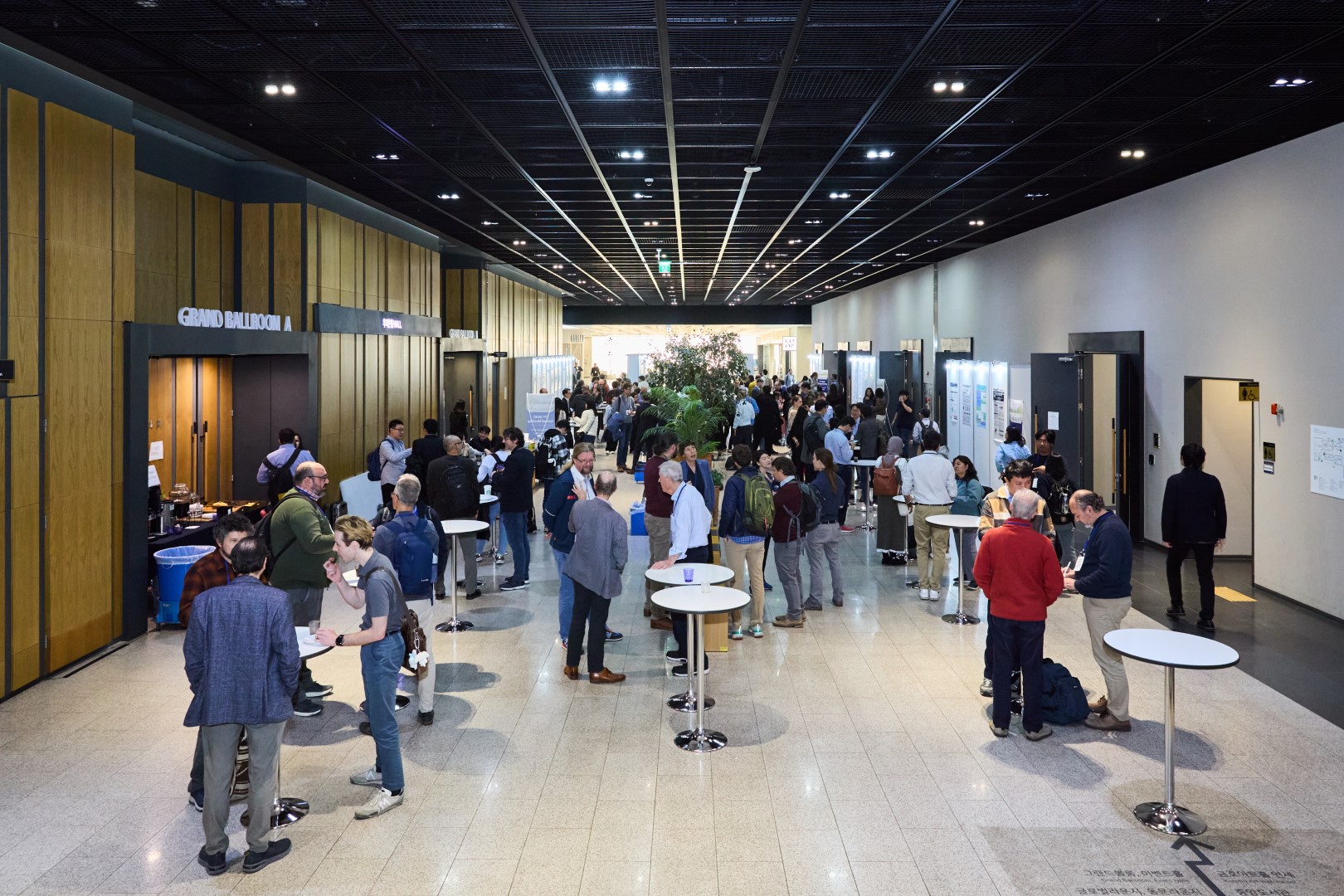
Researchers Gamze Ünlü, Alessio Mastrucci, and Volker Krey attended the 17th Integrated Assessment Modeling Consortium (IAMC) Annual Meeting, held 4-6 November 2024 in Seoul, South Korea, to share some of the latest findings from integrated modeling activities in the CircEUlar project with the research community.
Volker Krey – CircEUlar project coordinator – chaired the INDUSTRY session which presented the latest research on the integration of material stocks and flows and circular economy strategies into Integrated Assessment Models (IAMs). As part of that session, Gamze Ünlü, shared insights on Exploring Circular Economy Alternatives for Decarbonization of Global Mobility Infrastructure, conducted jointly with colleagues Andre Baumgart, Dominik Wiedenhofer, and Nina Eisenmenger from CircEUlar partner BOKU University.
Another contribution to the session came from Marianne Zanon Zotin of Utrecht University who presented findings from CircEUlar’s sister project CIRCOMOD on Bringing circularity into climate change mitigation scenarios: a preliminary multi-model intercomparison. In addition, Gamze presented a poster about Narratives and quantifications of Shared Socio-economic Pathways for the industrial sector jointly developed with IIASA researcher Florian Maczek.
As an important contribution to the SECTORS session, Alessio Mastrucci provided insights about the GHG mitigation potential of circular economy measures in the European residential buildings sector that help to reduce emissions embodied in buildings.
Finally, researcher from the CircEUlar and CIRCOMOD consortia agreed to collaborate on developing reporting standards for material stocks, flows and industrial sector activity for IAMs under the IAMC’s Scientific Working Group on Data Protocols and Management.



Gamze Ünlü, Volker Krey, Andre Baumgart, Dominik Wiedenhofer, & Nina Eisenmenger: Exploring Circular Economy Alternatives for Decarbonization of Global Mobility Infrastructure
The built environment encompasses human-made spaces for living, working, and recreation. Mobility infrastructure—roads, tunnels, bridges, and public transit—supports daily movement and well-being but relies heavily on material-intensive resources, representing 30% of total material stock in 2024. In our latest research presented in IAMC 2024, we examine how circular economy strategies can reduce embodied emissions in infrastructure materials like steel, cement, and aluminum which are known for their high carbon intensity. Circular economy strategies for mobility infrastructure include reducing overall mobility, expanding public transportation options like railways, increasing recycling, using cleaner fuels, and material substitution—such as incorporating waste materials from other industries.
Our results show, demand-side strategies, such as mobility reduction, could cut emissions by 35% by 2060, while on the supply side, using cleaner fuels shows the greatest impact. Additionally, material substitution—such as replacing clinker in cement with clay—could yield similar emissions reductions to carbon capture and storage (CCS) technologies. Combining both supply- and demand-side strategies offers the highest potential for cutting infrastructure-related embodied emissions.
Florian Maczek, Gamze Ünlü, & Volker Krey: Narratives and quantifications of Shared Socio-economic Pathways for the industrial sector
The Shared Socio-Economic Pathways (SSPs) have become a key framework in climate change research for addressing uncertainty, offering scenarios that project global socioeconomic changes through 2100. These scenarios are used to develop greenhouse gas emissions trajectories based on various climate policies. However, the SSP narratives lack specific detail on the industrial sector, a major contributor to emissions. As the modeling community enhances the representation of industry in their models—capturing explicit production processes and expanding options for climate mitigation, like circular economy practices—there is a need for more detailed, industry-focused SSP narratives.
Our poster at IAMC 2024 engaged researchers and modelers by proposing a qualitative input table that can be used for model parametrization, detailing separate industries, including chemicals, iron and steel, cement, and aluminum. Additionally, we translate SSP narratives into quantitative assumptions to apply in our technology-detailed industry model, MESSAGEix-Materials, which allows us to assess impacts on future energy demand and CO₂ emissions. Our findings highlight significant differences in the industrial sector’s development under varying SSP-based global futures.
Alessio Mastrucci, Xiaoyang Zhong, Florian Maczek, Fei Guo, Volker Krey, & Bas van Ruijven: Circularity scenarios for the European residential sector towards net-zero emission targets
Buildings are responsible for considerable material demand and greenhouse gas (GHG) emissions. Circularity strategies can effectively reduce emissions but are largely overlooked in mitigation scenarios for buildings. We explore the mitigation potential of three key circularity strategies – floorspace reduction, wood-construction, and lifetime extension – under different climate mitigation policies for the European residential sector, using the building sector model MESSAGEix-Buildings linked to IAM and industrial ecology methods.
The results show that these circularity strategies can reduce material demand by 65%, and total embodied and operational emissions by 40% in 2050 relative to a reference scenario.

Photos: © IAMC
